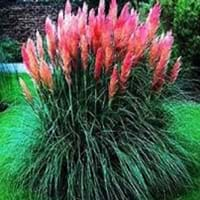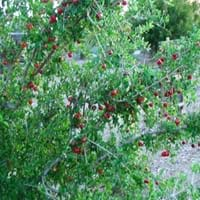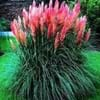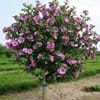Life Span
Perennial
Annual and Perennial
Origin
South America, Argentina
Central America, South America
Types
Not Available
Not Available
Habitat
All sorts of environments
Dry areas, Well Drained, Woodlands
USDA Hardiness Zone
7-11
9-11
AHS Heat Zone
12 - 7
Not Available
Sunset Zone
H1, 3a, 3b, 4, 5, 6, 7, 8, 9, 10, 11, 12, 13, 14, 15, 16, 17, 18, 19, 20, 21, 22, 23, 24
Not Available
Habit
Arching/Fountain-shaped
Thicket/Colonizing
Flower Color Modifier
Bicolor
Bicolor
Fruit Color
Non Fruiting Plant
Red
Leaf Color in Spring
Green, Gray Green
Light Green, Gray Green
Leaf Color in Summer
Light Green
Light Green, Gray Green
Leaf Color in Fall
Green, Gray Green
Light Green, Gray Green
Leaf Color in Winter
Green, Gray Green
Green
Leaf Shape
long with sharp edges
Oval
Plant Season
Spring, Summer, Fall, Winter
Spring, Summer
Sunlight
Full Sun, Partial Sun, Partial shade
Full Sun
Type of Soil
Loam, Sand
Loam, Sand
The pH of Soil
Acidic, Neutral, Alkaline
Alkaline
Soil Drainage
Well drained
Well drained
Bloom Time
Early Summer, Summer, Late Summer, Early Fall
Spring, Summer
Tolerances
Pollution, Salt, Soil Compaction
Drought
Where to Plant?
Ground
Container, Ground, Pot
How to Plant?
Divison, Seedlings, Transplanting
Cuttings, Seedlings
Plant Maintenance
Medium
Medium
Watering Requirements
Do not water excessively, Keep the ground moist but not water-logged
Average Water Needs, Do Not over Water, Requires regular watering
In Summer
Lots of watering
Lots of watering
In Spring
Moderate
Moderate
In Winter
Average Water
Average Water
Soil pH
Acidic, Neutral, Alkaline
Alkaline
Soil Type
Loam, Sand
Dry, Sandy
Soil Drainage Capacity
Well drained
Well drained
Sun Exposure
Full Sun, Partial Sun, Partial shade
Full Sun
Pruning
Prune before Winter, Remove damaged leaves, Remove dead branches, Remove dead leaves
In Early Autumn, Prune in winter, Remove branches, Remove damaged leaves, Remove dead branches, Remove dead leaves, Remove dead or diseased plant parts
Fertilizers
10-10-10 diluted liquid fertilizer, All-Purpose Liquid Fertilizer
Complete balanced fertilizer, iron-rich fertilizer
Pests and Diseases
Free of serious pests and diseases
Aphids, Red blotch, Whiteflies
Plant Tolerance
Drought, moderate salt tolerance
Wind
Flower Petal Number
Single
Single
Foliage Texture
Fine
Medium
Foliage Sheen
Matte
Glossy
Attracts
Birds, songbirds, Wildlife
Bees, Birds, Butterflies, pollinators
Aesthetic Uses
Beautification, Informal Hedge, Mixed Border, Ornamental use, Showy Purposes
Showy Purposes
Beauty Benefits
Not Available
Good for skin
Environmental Uses
Air purification
Air purification, Food for birds, Nesting sites for birds, Windbreak
Medicinal Uses
No Medicinal Use
Antioxidants, Arthritis, Diarrhea, Dysentry, Fertility, Fever, Inflammation, Kidney problems, scurvy, Urinary tract problems, Vitamin C
Part of Plant Used
Flowering Tips, Stem, Whole plant
Flowers, Fruits, Leaves, Root
Other Uses
Showy Purposes
Used As Food, Used as Ornamental plant, Used for making hedge
Used As Indoor Plant
Sometimes
Yes
Used As Outdoor Plant
Yes
Yes
Garden Design
Dried Flower/Everlasting, Feature Plant, Foundation, Hedges, Screening / Wind Break
Rock Garden / Wall, Wildflower
Botanical Name
CORTADERIA selloana 'Carminea Rendatleri'
Malpighia emarginata
Common Name
Pampas Grass, Pink Pampas Grass
Barbados cherry, West Indian cherry and wild crepe myrtle
In Hindi
Pink Pampas grass
Acerola Tree
In German
Pink Pampas grass
Acerola Baum
In French
Herbe Pampas rose
Acerola Arbre
In Spanish
Hierba de color rosa Pampas
Árbol de acerola
In Greek
Pink Pampas grass
Acerola Δέντρο
In Portuguese
Grama de Pampas rosa
Árvore acerola
In Polish
Różowy Pampas trawy
Acerola Drzewo
In Latin
Pink Pampas grass
Acerola ligno
Phylum
Tracheobionta
Not Available
Class
Liliopsida
Not Available
Order
Cyperales
Malpighiales
Family
Poaceae
Malpighiaceae
Genus
Cortaderia
Malpighia
Clade
Not Available
Angiosperms, Eudicots, Rosids
Tribe
Not Available
Not Available
Subfamily
Not Available
Not Available, Paperveroideae
Number of Species
Not Available
Not Available
Importance of Pink Pampas Grass and Acerola
Want to have the most appropriate plant for your garden? You might want to know the importance of Pink Pampas Grass and Acerola. Basically, these two plants vary in many aspects. Compare Pink Pampas Grass and Acerola as they differ in many characteristics such as their life, care, benefits, facts, etc. Every gardener must at least have the slightest clue about the plants he wants to plant in his garden. Compare their benefits, which differ in many ways like facts and uses. The medicinal use of Pink Pampas Grass is No Medicinal Use whereas of Acerola is Antioxidants, Arthritis, Diarrhea, Dysentry, Fertility, Fever, Inflammation, Kidney problems, scurvy, Urinary tract problems and Vitamin C. Pink Pampas Grass has beauty benefits as follows: Not Available while Acerola has beauty benefits as follows: Not Available.
Compare Facts of Pink Pampas Grass vs Acerola
How to choose the best garden plant for your garden depending upon its facts? Here garden plant comparison will help you to solve this query. Compare the facts of Pink Pampas Grass vs Acerola and know which one to choose. As garden plants have benefits and other uses, allergy is also a major drawback of plants for some people. Allergic reactions of Pink Pampas Grass are sneezing whereas of Acerola have Pollen respectively. Having a fruit bearing plant in your garden can be a plus point of your garden. Pink Pampas Grass has showy fruits and Acerola has showy fruits. Also Pink Pampas Grass is not flowering and Acerola is flowering. You can compare Pink Pampas Grass and Acerola facts and facts of other plants too.





